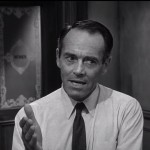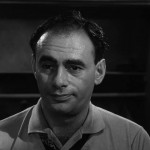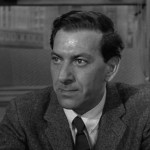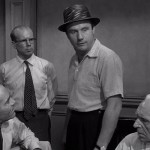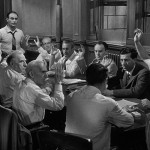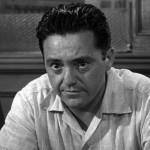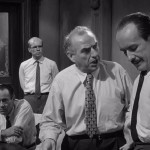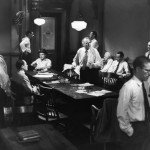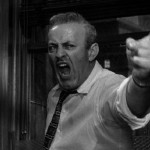
12 Angry Men – 1957
I loved this movie. It is a thoroughly engaging drama about 12 jurors assigned to a murder trial. They are all different men with distinct personalities, a great credit to Reginald Rose, author of the original teleplay on which the film is based. The film was an intellectual drama which was superbly acted. It really made me think about what It would mean to be a juror in such a case, and what the true meaning of the famous term Reasonable Doubt really is.
At times, the trial itself seemed almost secondary to the interactions and personality conflicts between the twelve men. That’s not to say that the trial wasn’t immensely important to the plot. It was the very nature of the setting, the reason why the 12 men from different walks of life were all confined in a small room with a common purpose, a singular goal. It was their job to reach a verdict of guilty or not guilty. The men’s names are never given and they were only referred to by their numbers.
Juror #1, played by Martin Balsam, is the foreman who does his best to keep the deliberations civil; #2, John Feidler, is meek and mild mannered; #3, Lee J. Cobb, is loud obnoxious, and has an explosive temper; #4, E. G. Marshall, is cold and analytical; #5, Jack Klugman, is a gentle man who grew up in a violent neighborhood; #6, Edward Binns, is a blue-collar worker who is tough but principled; #7, Jack Warden, is a salesman who seems indifferent to the case and is also prejudice against immigrants; #8, arguably the film’s lead played by Henry Fonda, is thoughtful and earnestly wants to do the right thing; #9, Joseph Sweeney, is elderly and insightful; #10, Ed Begley, is a harsh, racist loud-mouth; #11, George Voscovec, is a foreign immigrant with a high level of respect for the American justice system; and #12, Robert Webber, is an advertising executive who is indecisive.
The entire cast did an incredible job, but special notice has to be given to Fonda and Cobb, especially Cobb, for bringing out the films greatest emotional drama. The film deals with a couple of sensitive issues like prejudice and racism. It shows the benefits of cooperation and open-mindedness, and the destructive powers of bigotry and intolerance. One particularly well-delivered monologue by Juror #10, showed not only how he was ready to convict the defendant based solely on his Latino heritage, but how the rest of the jurors rejected him for his racist views.
But I also have to applaud the film’s director, Sidney Lumet, for his astonishing instincts in the way the movie was filmed. For example, the film starts out with more wide shots, giving a feel of openness and ease. But gradually, as the conflicts heat up, the camera does more cuts and more close-ups, giving the drama more intensity along with a more claustrophobic feel. Another little trick he used to build the film’s intensity was to start out with camera angles that were at eye level, and gradually lowering them over the course of the movie. By the film’s climax, most shots were done from low angles, looking up at the actors.
And as for the case, itself, it was actually amazing how the 12 men, through their arguing and examining of the evidence, were able to change the initial vote, 11 guilty to 1 not guilty, to a final unanimous vote of not guilty. They listed the prosecution’s main arguments, and, one by one, were able to cast doubt on each of them. For example, a man’s statement that he heard the body fall was called into question by an eye witness’s statement, saying that she saw the murder through the windows of a passing L train. The passing train would have been so loud that the man could not have heard anything. It sounds logical, right?
But here is where the film apparently failed in its realism. According to Supreme Court Justine Sonia Sotomayor, “…most of the jurors’ conclusions are based on speculation, not fact. Events such as Juror 8 entering a similar knife into the proceeding, doing outside research into the case matter in the first place, and ultimately the jury as a whole making broad, wide ranging assumptions far beyond the scope of reasonable doubt (such as the inferences regarding the ‘Old Woman’ wearing glasses) would never be allowed to occur in a real life jury situation, and would in fact have yielded a mistrial.” Her statement makes perfect sense, but it was still a highly enjoyable drama.
